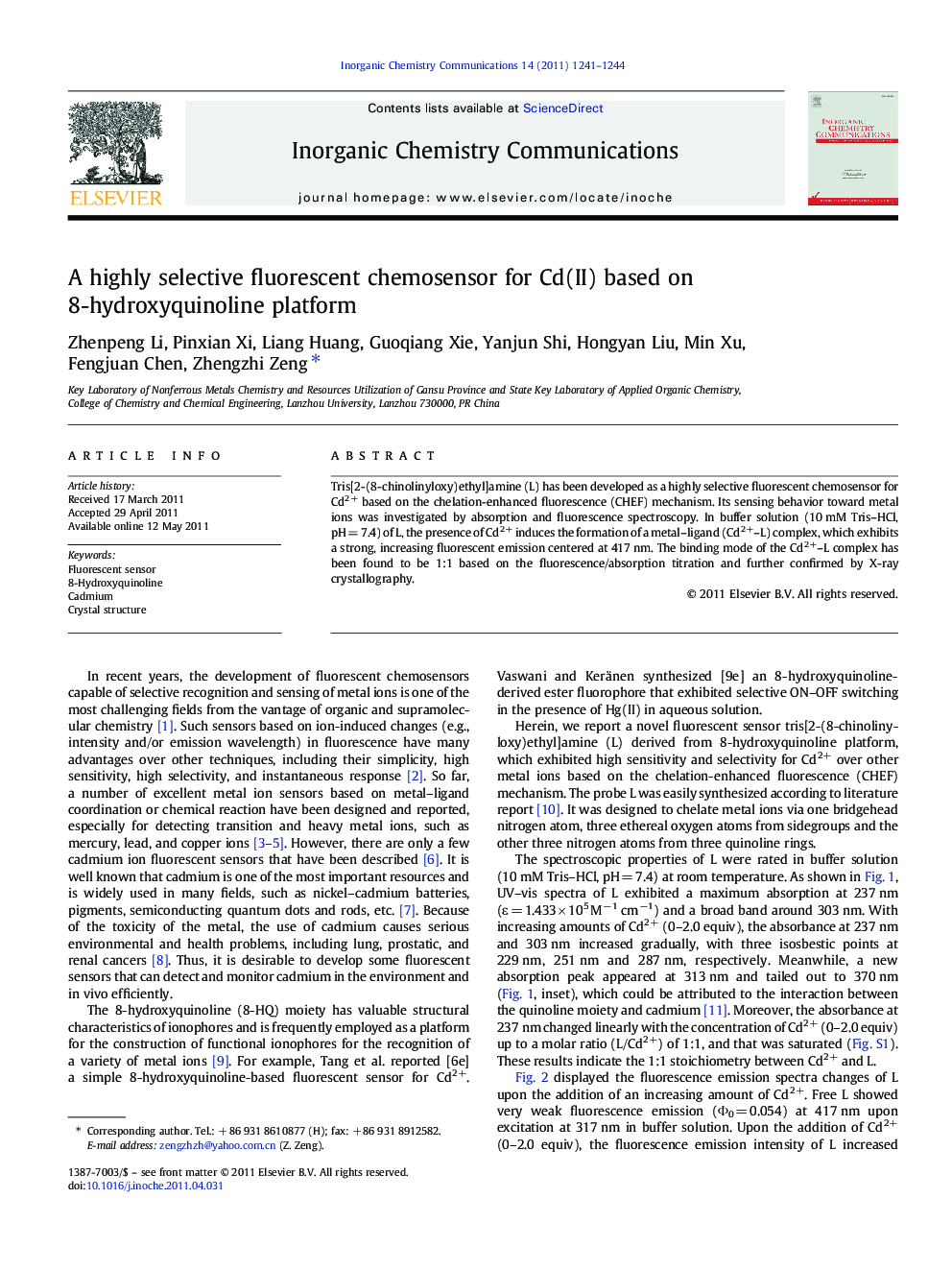| Article ID | Journal | Published Year | Pages | File Type |
|---|---|---|---|---|
| 1302638 | Inorganic Chemistry Communications | 2011 | 4 Pages |
Tris[2-(8-chinolinyloxy)ethyl]amine (L) has been developed as a highly selective fluorescent chemosensor for Cd2+ based on the chelation-enhanced fluorescence (CHEF) mechanism. Its sensing behavior toward metal ions was investigated by absorption and fluorescence spectroscopy. In buffer solution (10 mM Tris–HCl, pH = 7.4) of L, the presence of Cd2+ induces the formation of a metal–ligand (Cd2+–L) complex, which exhibits a strong, increasing fluorescent emission centered at 417 nm. The binding mode of the Cd2+–L complex has been found to be 1:1 based on the fluorescence/absorption titration and further confirmed by X-ray crystallography.
Graphical abstractTris[2-(8-chinolinyloxy)ethyl]amine (L) has been developed as a highly selective fluorescent chemosensor for Cd2+ based on the chelation-enhanced fluorescence (CHEF) mechanism. X-ray crystal structure of cadmium complex revealed that the coordination form of L and Cd(II) is 1:1.Figure optionsDownload full-size imageDownload as PowerPoint slideResearch highlights► A novel fluorescent sensor L based on the 8-hydroxylquinoline platform has been developed. ► This sensor exhibited high sensitivity and selectivity for Cd2+ over other metal ions. ► Probe L could effectively detect Cd2+ in a wide pH range (pH 4–11). ► The 1:1 coordinative formation between L and Cd(II) was demonstrated by X-ray crystal diffraction.
